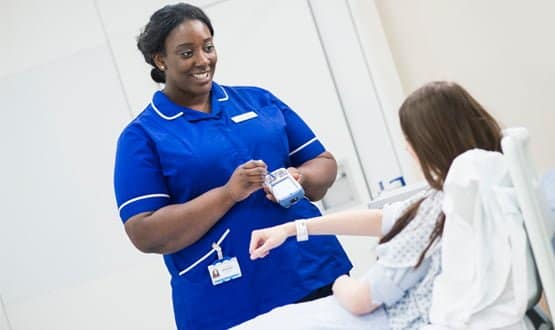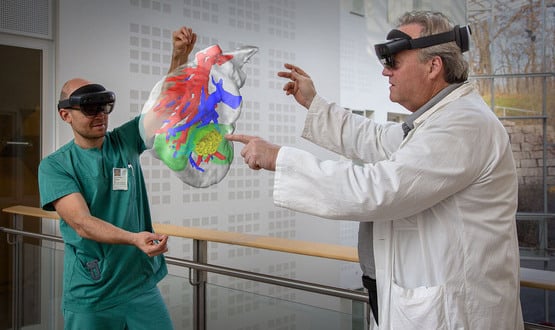Leeds Teaching to pull data from barcodes straight into EPR
- 11 September 2017

The largest of the Scan4Safety demonstrator sites is to link information from barcodes to its electronic patient record (EPR) and patient administration system (PAS).
The Leeds Teaching Hospitals NHS Trust plans to use the scanned information in its in-house built EPR, PPM+, and its PAS.
Scan4Safety is a £12 million government project that intends to show the benefits of introducing standardised barcodes to healthcare. Six demonstrator sites were selected in January 2016.
The EPR move was described as “quite revolutionary for us” by Chris Slater, associate director of commercial and procurement at Leeds.
He explained the intention is that “when the clinician scans the [patient] wristband, you’re straight into patient record therefore bringing up the appropriate notes that would be required”.
The EPR project is currently in beta, with the plan to roll it out from October.
When Scan4Safety was launched, the Department of Health estimated implementing GS1 standard barcodes across the NHS would lead to £800 million of savings. After the first year of the project, it revised that figure to £1 billion over the next seven years.
Slater suggested the identification of products and automated replacement has “got the potential to significantly release nursing time from supply chain duties, back into caring for patients”.
It would also allow product recall to happen swiftly and accurately, he said. “From a patient safety point of view, you know it’s the right stock and it’s in date, and that it can be used on a patient.”
The trust’s latest board papers described how the Scan4Safety work will maximise patient safety, improve procurement and reduce the risk of ‘Never Events’.
“We are progressing well with the radical change in procurement, inventory management, purchase to pay processes and patient and product tracking capabilities realised by this programme.”
Glen Hodgson, head of healthcare at GS1, said Scan4Safety is “designed to improve patient safety – it’s about increasing clinical effectiveness and greater operational efficiency”.
“The real value of GS1 standards is… you get all the information you’ll ever need to know about what happened to a patient and why, you can start stopping things like medical errors and never events, so of course you’d link it to PAS and EPR.”
The other demonstrator sites in the initiative are Derby, Leeds, Salisbury, Cornwall, North Tees and Plymouth.
One of the things Hodgson has learnt from the programme is “this isn’t a system or an IT implementation; it’s a significant culture change for an organisation”.
“When you’re looking at implementing the standards actually what you need to do is bring the hearts and minds.”
Slater echoed this, saying that at Leeds “acceptance by the clinicians is obviously a key success factor”.
Barcodes in the NHS are not new and many trusts have been using the GS1 barcode for years. GS1 standards are used in many different industries but in health they allow for a globally unique identification of each person, product and place within the NHS.
They are also system agnostic, allowing the exchange of this information between different care providers and systems.
NHS trusts have been required to used standard GS1 barcodes for patient wristbands since October 2013, after growing concerns about wristband-related medical errors.





3 Comments
@Dan
The £12 million is being spent actually making it work in a pilot of 12 Trusts – not on a proof of concept.
Each Tesco store is in effect one stock location (with one goods-in) with all items being deducted from stock as it passes over the scanner at the tills.
Hospitals have hundreds of stock locations and each episode of patient care is in effect a “check-out” even if its a sticky plaster or pair of gloves. Also many hospital products still do not have bar-codes on the packing.
Hum… will we be able to scan our wrist band and see our own notes? Able to check for errors or omissions? Take the notes back to our GPs in an attempt to close the loop of communication between Primary and secondary care?
I’d like to see that implemented.
“radical change in procurement, inventory management”.
Perhaps for the NHS but £12 million to prove what Tesco has been doing for decades seems a lot. Even Aldi saw the light years ago.
Comments are closed.